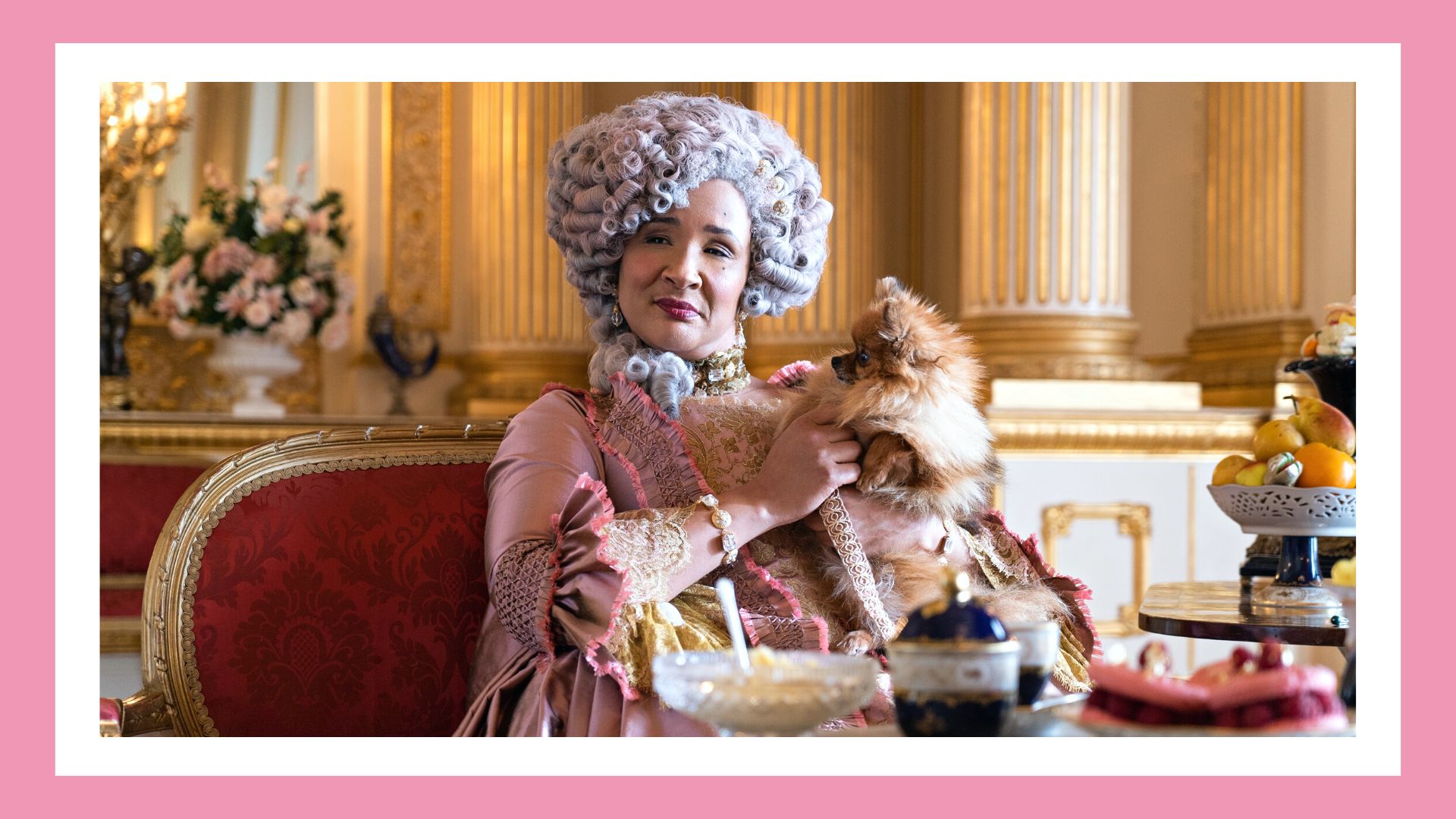What is the queen sniffing in 'Bridgerton'? All about that mysterious substance
Season two shows Her Majesty snorting a little something-something—but exactly what is the queen sniffing in 'Bridgerton'?


Bridgerton season 2 has sex (though, alas, not as much as the first season) and rock-and-roll (that soundtrack is loaded with everything from Alanis Morissette to Harry Styles), but does it also have drugs, too?
Throughout several episodes of both seasons one and two of the Netflix hit, Queen Charlotte (played by Golda Rosheuvel) can be seen taking a bump of a mysterious substance, a brown powder that she scoops out with a small spoon and snorts up her nose.
Now, you'd be forgiven for thinking that Bridgerton was going the way of Breaking Bad—many fans were plenty confused as to what exactly Her Majesty was enjoying But what was she sniffing exactly? Here's what we know.
Is no one going to talk about he queen sniffing that brown powder 💀😂😂😂#BridgertonMarch 26, 2022
Looool hold up What the Queen is be sniffing on Bridgerton 👀?March 26, 2022
The way the queen casually be sniffing coke 😂💀March 26, 2022
What is the queen sniffing in 'Bridgerton'?
Despite the confusion, what Queen Charlotte is seen sniffing isn't an illicit substance at all. In fact, it was the very period-appropriate powder tobacco, commonly known as "snuff." (Our "When is Bridgerton set?" guide delves even more into the show's historical accuracies and creative liberties.)
Snuff is a smokeless form of tobacco made from finely ground or shredded tobacco leaves that is inhaled through the nostrils. Snuff tobacco was considered a luxury item and was a popular choice for noblemen, including royals like Queen Charlotte, many of whom would carry expensive and elaborately decorated "snuff boxes" to store the substance. In fact, the real Queen Charlotte did have an affinity for the snuff stuff IRL, so much so that she reportedly had an entire room dedicated to ground tobacco at Windsor Castle and was jokingly referred to as "Snuffy Charlotte."
"By the time of Regency (when snuff taking was in the last decade of its enormous popularity), snuff-boxes had become objects of fashion and status and, in upper-class circles, formed part of a complex social ritual with its own precise rules and etiquette," writes author Jennifer Kloester in her book Georgette Heyer's Regency World. In Bridgerton, you can see the queen enjoying the stuff out of a decorous, footed gold box, which was a popular option at the time. By the time of her death in 1818, it was said that the Queen had up to 90 snuff boxes in her possession.
Like all trends, snuff-snorting fizzled out to make way for a new phenomenon. "Snuff taking reached the height of its popularity in England between 1760 and the end of the Regency in 1820, becoming less common as the century progressed and tobacco smoking became increasingly preferred," writes Kloester.
Not the queen still sniffing powdered tobacco #bridgertonseason2 pic.twitter.com/DtVLT3k3xCMarch 25, 2022
What drugs do Colin and Benedict Bridgerton take?
While Queen Charlotte was not doing hard drugs during Bridgerton season 2, a few of the Bridgerton boys do get into some psychedelic trouble.
In episode three, Colin Bridgerton offers his brother Benedict a powder that he picked up on his travels, telling him it will ease his worries about his art-school application. It's likely that the substance the younger Bridgerton sibling had brought home as a souvenir is opium. Colin tells him to give put a little pinch in his tea, but the ever-anxious Benedict ends up dumping the whole lot into his cup, making for one, let's say, spirited dinner later. What would Lady Whistledown say if she found out?!
The first two seasons of Bridgerton are available to stream on Netflix. And here's everything we know so far about Bridgerton season 3.
Christina Izzo is the Deputy Editor of My Imperfect Life.
More generally, she is a writer-editor covering food and drink, travel, lifestyle and culture in New York City. She was previously the Features Editor at Rachael Ray In Season and Reveal, as well as the Food & Drink Editor and chief restaurant critic at Time Out New York.
When she’s not doing all that, she can probably be found eating cheese somewhere.
